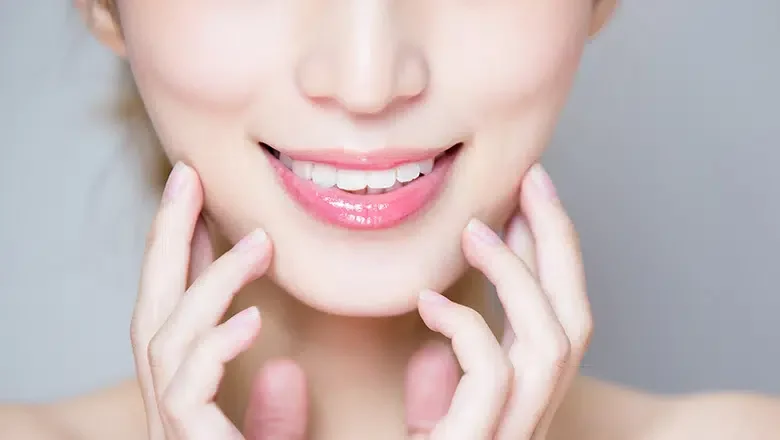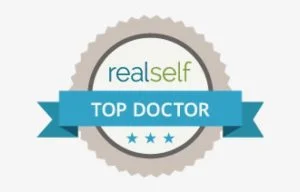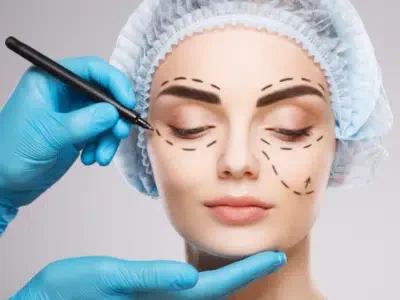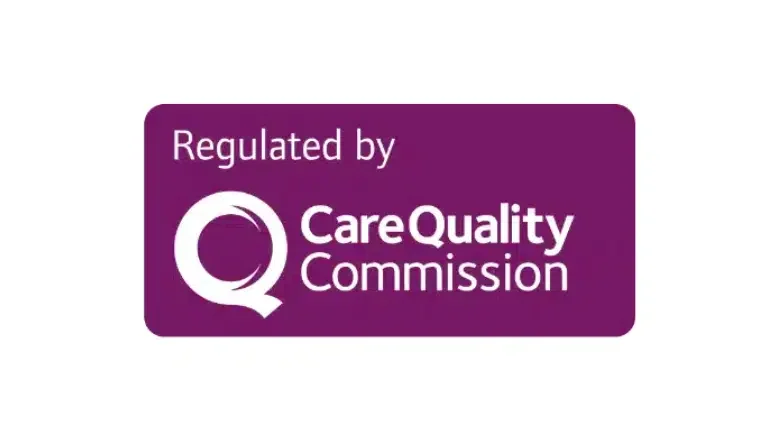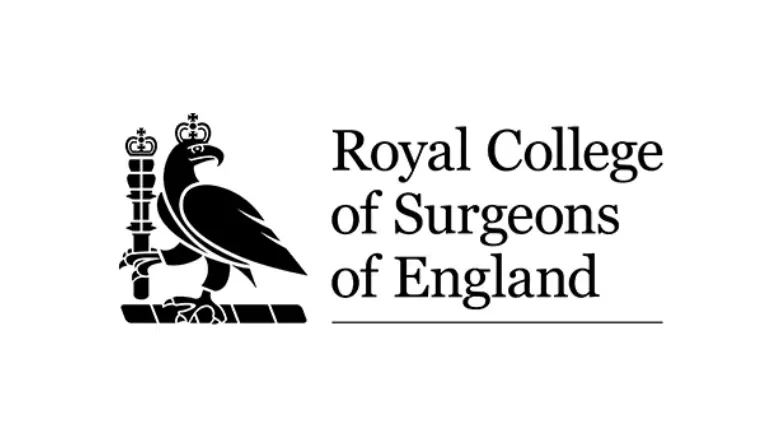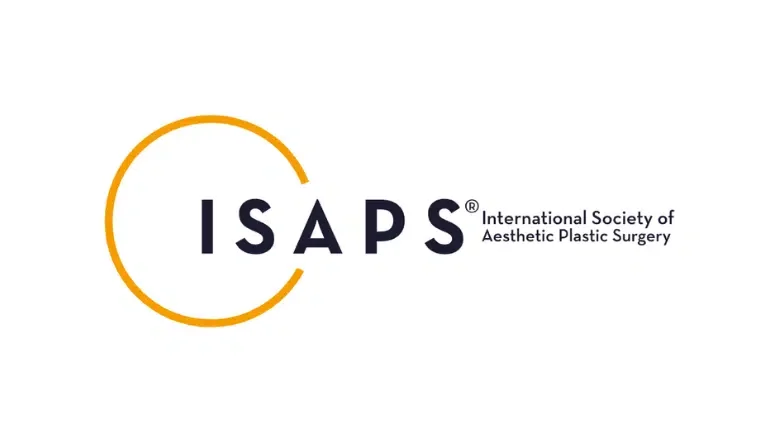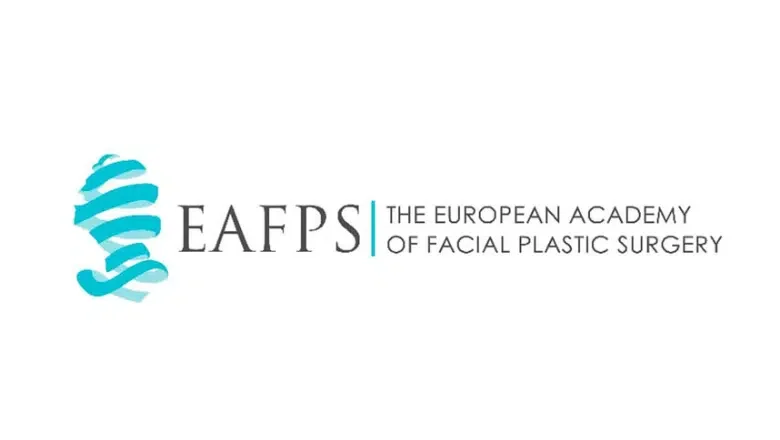Buccal Fat Removal London & UK
Buccal Fat Removal London – Surgery to reduce Chubby Cheeks
Buccal fat removal is a surgical procedure designed to create a slimmer and more contoured face by removing fat from the inner cheeks. While facial fullness is considered an attractive feature by some, others may feel self-conscious about a round, chubby or overly broad face. This can be caused by genetics, with the body naturally storing fat in the cheeks. Buccal fat pad excision can address this concern by removing a small amount of fat from the cheeks, resulting in a more defined and slimmer appearance.
RELATED: Why is Buccal Fat Removal Gaining So Much Popularity?
Centre for Surgery in London offers buccal fat removal surgery for patients in the UK. This procedure involves the strategic removal of fat from the cheeks to improve facial proportions and contour. The technique is performed from inside the mouth, leaving no visible external facial scars. Our experienced surgeons at Centre for Surgery use the latest techniques and technologies to ensure safe and effective results.
What is Buccal Fat Removal Surgery?
The buccal fat pad is located in each cheek beneath the cheekbones and is a normally occurring fat pad. The buccal fat pad provides a protective cushioning effect and enhances the function of the muscles responsible for chewing food in the lower aspect of the cheeks. Although we all have buccal fat pads, the amount of buccal fat differs between individuals, with some having more pronounced buccal fat pads than others. These patients will have more volume in the lower part of the cheeks. The presence of prominent buccal fat pads can be genetic, with many slim people having large buccal fat pads. If you want a slimmer cheek contour with the enhancement of cheek definition, then you may be an ideal candidate for buccal fat pad removal.
RELATED: Buccal Fat Removal: Achieve a Slimmer, Defined Face
When we are young, ample, round cheeks are perceived as a marker of good health, and many consider the rounded face to be a desirable feature. With age, some may prefer a less rounded face. This is where buccal fat removal or cheek fat removal may be able to help address your concerns.
Here are some alternative names for buccal fat removal surgery:
- Cheek reduction surgery
- Buccal lipectomy
- Chubby cheek reduction
- Buccal fat pad removal
- Facial contouring surgery
- Facial fat reduction surgery
- Fat face reduction
- Midface sculpting
- Buccal fat extraction
- Lower face slimming surgery
- Sub-cheek fat removal
- Puffy cheeks surgery
Buccal fat extraction involves carefully removing defined amounts of fat tissue from the buccal fat pads in the cheeks. The fat tissue is responsible for the rounded appearance of the cheeks. For some people, this results in prominent cheeks that may be out of balance with the rest of their facial features giving rise to unpleasant nicknames such as ‘chipmunk cheeks’ or ‘hamster cheeks’. If excessively rounded cheeks trouble you, with an associated loss of self-esteem, buccal fat removal may be a solution to help balance your facial features and restore your confidence.
Buccal fat removal is a minimally invasive surgical procedure where the buccal fat pad is carefully removed either partially or completely, which gives rise to permanent results which may be noticed straight away. With the removal of significant collections of fat from the lower face, it is possible to achieve a more slender and defined lower facial shape with particular emphasis on the jawline. An additional enhancement is possible when combined with liposuction of the submental region and jawline. It is important to bear in mind that the buccal fat removal procedure may lead to the increased prominence of nasolabial or nose-to-mouth lines and also lines when smiling. The buccal fat pad helps to smoothen out these areas of the face. Removing too much fat may lead to a wasted or gaunt appearance which is exacerbated by the ageing process. The removal of the supporting collagen and fat framework may explain why this could happen. This is why it is very important to have the procedure performed by a highly skilled and experienced consultant plastic surgeon who is able to assess you in detail and provide an honest opinion of what can be achieved with the buccal fat reduction procedure.
Expected results after buccal fat pad removal:
- A contoured and more defined lower face
- More prominent cheekbones which appear higher
- More sculpted look, especially when combined with liposuction of the lower face
Buccal fat reduction involves surgically removing the fat pads within the cheek. This fat sits on either side of the cheek and under the cheekbones. This fat can remain even after a person loses weight and is often perceived as giving someone a child-like appearance. As such, a buccal fat reduction is often an appealing choice.
Benefits of Buccal Fat Removal Surgery
Buccal fat removal surgery offers several benefits for individuals looking to achieve a slimmer and more defined facial appearance. These benefits include:
- Slimmer Face: Buccal fat removal surgery can create a slimmer and more contoured facial appearance by removing excess fat from the cheeks. This can help to enhance facial features and provide a more aesthetically pleasing look.
- Improved Facial Proportions: The removal of buccal fat can improve the overall proportions of the face, creating a more balanced and harmonious appearance.
- More Defined Cheekbones: Buccal fat removal surgery can enhance the appearance of the cheekbones, creating a more defined and angular look.
- Enhanced Self-Confidence: Individuals who are self-conscious about the appearance of their face due to excess cheek fat can benefit from increased self-confidence and improved self-esteem after the procedure.
- Minimally Invasive Procedure: The buccal fat removal procedure is minimally invasive, with no visible external facial scars. This means that there is minimal downtime and a quicker recovery period compared to more invasive facial procedures.
Am I suitable?
All patients should be in good health and have realistic expectations about what can be achieved with buccal fat removal surgery.
- We do not treat patients below the age of 18 years of age.
- Healing is better if patients refrain from or quit smoking.
The buccal fat removal procedure is performed for cosmetic and functional purposes, to help improve one’s image and self-esteem and relieve pain and discomfort.
- The ideal candidate for the procedure are people in their mid-20s to 40s who wish to get rid of their ‘chipmunk cheek’
- Also, for those who wish to achieve a more delicate, chiselled appearance
Prior to the surgery, you will have a consultation with a surgeon. You will be able to discuss your reasons for wanting this procedure, your wants, needs and desired outcomes, as well as your full medical history to establish whether or not you are an appropriate candidate.
Buccal fat removal is not suitable for everyone, and patients who may not be suitable for surgery include:
- People with gaunt faces. If you have a naturally narrow face, then buccal fat removal may exacerbate the appearance of sunken cheeks, which also occur during the natural ageing process.
- Patients who suffer from progressive hemifacial atrophy. This is a rare condition which results in half of the face appearing shrunken and thin with a reduction of the buccal fat pad.
- The natural ageing process results in the loss of soft tissue volume. Removal of the buccal fat pad exacerbates the appearance of jowls and sunken cheeks, which may result in a person appearing much older than they actually are. Patients who are over the age of 45 may not be suitable for buccal fat removal.
Preparation for buccal fat removal
When you have decided to proceed with a consultation for buccal fat removal, the first step is to have a consultation with one of our expert plastic surgeons to assess your suitability for the buccal fat removal procedure. Your surgeon will examine you thoroughly at your consultation and may recommend a combination procedure with chin and neck liposuction.
Before the buccal fat removal procedure
- Stop the use of tobacco, as smoking increases the risk of wound-healing complications.
- Have a preoperative consultation to review the procedure’s details with your surgeon.
- Avoid any medicines which could increase the risk of bleeding, such as aspirin and NSAIDs
- Use paracetamol for pain relief if required
- Collect your prescription for postoperative antibiotics
- Start taking Arnica tablets two days before the procedure
- If you are having surgery under GA, you will be required to fast for 6 hours for food and 2 hours for clear liquids beforehand
- Set up your home recovery area with comfortable bedding and pillows
- Avoid the use of lotions or scented perfumes before the procedure
- Use mouthwash before the procedure
- Wear comfortable clothing on the day of the procedure
- Avoid wearing make-up and remove all face and body piercings
How Is Buccal Fat Removal Surgery Performed?
Buccal fat removal is also known as cheek contouring or cheek reduction surgery. The procedure is designed to make the face look slimmer and enhance cheek contour. Buccal fat pad removal gives permanent results and is a highly effective procedure for removing chubby cheeks. Buccal fat reduction can also be combined with facial cosmetic surgery such as a facelift or rhinoplasty.
Buccal fat removal can be safely and effectively performed under local anaesthesia so that you will be relaxed and comfortable throughout. The procedure takes about an hour to complete.

The surgeon makes a small (2-4 cm) cut between the inner cheek and the gum near the second molar from the back. The outer cheek is then pressed on to enable an adequate amount of buccal fat to protrude through the incision, which is teased out with surgical forceps. Depending on the desired results, the surgeon may remove the entire buccal fat pad or just a portion. When the buccal fat pads are removed, they appear as small globules of fat. The incision is then carefully closed with dissolvable sutures.
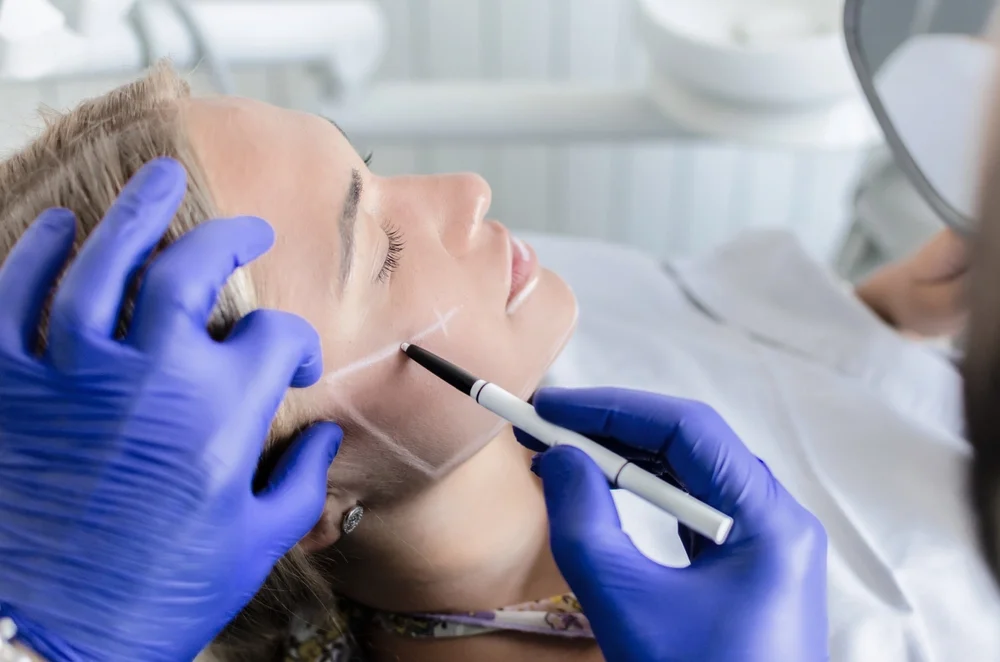
Buccal fat pad removal can also be performed simultaneously with other facial plastic surgery procedures, including submental liposuction, rhinoplasty or dimple creation. The procedure is delicate in nature, and only a surgeon with significant experience in performing the procedure should be chosen to ensure a careful removal of the buccal fat pad, and that the final result is natural and in harmony with the patient’s face.
What is the difference between full and partial removal of the buccal fat pad?
During the procedure, the amount of tissue to be removed will vary depending on what the patient would like to achieve. Partial removal of the buccal fat pad will result in residual fat remaining in the lower cheek area. For those who have a partial removal, if they gain weight in future, the results of the surgery will be affected by the potential recurrence of the fat pad prominence. A partial buccal fat pad removal is ideal for older patients who want an appearance of high cheekbones but without the risk of looking gaunt after the procedure, for younger patients with more volume in the lower face. It may be a better option to opt for the total removal of the buccal fat pad to attain a more dramatic result.
Are the results of buccal fat removal permanent?
Yes. The results of buccal fat removal are permanent provided the patient does gain a large amount of weight. The best candidates for buccal fat surgery are those with a stable, healthy weight and who are able to maintain their weight over time.
Can liposuction be used to remove the buccal fat pad?
Liposuction cannot be used to remove buccal fat, even with the micro liposuction technique. This is because there are many important structures deep in the face that a liposuction cannula could injure. The consistency of buccal fat is also different from regular fat in the chin and neck area.
Combining buccal fat removal with neck liposuction is possible to achieve more definition of the jawline and submental area (area beneath the chin).
Recovery after buccal fat removal
After the procedure, it is common to experience mild discomfort and associated swelling of the face, but this will rapidly settle within two weeks. The appearance of cheeks will start to look thinner and have more definition once the swelling has settled, and there will be no visible scarring as the incisions are made inside the mouth. Final results should appear after about four weeks to 12 weeks and will continue to improve with time as the swelling fully settles. The incisions inside the mouth require about 7-10 days to heal fully, and it is important to eat a soft diet in the first few days after surgery. Ice packs and simple painkillers like paracetamol are recommended for the first three days after buccal fat removal.
The surgeon uses non-absorbable sutures as standard, and there is no requirement to have the sutures removed at your postoperative appointment. The surgeon recommends sleeping on your back for three nights to help you recover. It is important to avoid all strenuous activities, including the gym, for at least one week after the procedure. Patients can return to their normal activities after two weeks.
What can I eat following buccal fat removal?
Our surgeons recommend that foods with a granular consistency are avoided after buccal fat surgery, as the two small incisions within the mouth may allow foods with finer consistency to get stuck in them. You should focus on soft foods like mashed potatoes or fully blended smoothies, which should not affect the incision sites.
One of the significant benefits of buccal fat removal is that it does not result in any visible scarring, as all surgical incisions are made inside the mouth. The incisions are small in length and heal very well.
Potential risks and complications of buccal fat removal
As with any surgical procedure, buccal fat removal surgery carries some risks and potential complications. These include:
- Infection: There is a risk of infection after any surgery, and buccal fat removal is no exception. Patients should follow all post-operative care instructions to minimize the risk of infection.
- Bleeding: There may be some bleeding during or after the procedure. If excessive bleeding occurs, additional surgery may be required.
- Nerve Damage: There is a risk of nerve damage during the surgery, which can cause numbness or weakness in the face. This is a rare complication and typically resolves on its own over time.
- Asymmetry: In some cases, buccal fat removal surgery may result in asymmetrical cheeks or facial features. This can typically be corrected with additional surgery.
- Scarring: While buccal fat removal is a minimally invasive procedure, there is a risk of scarring at the incision site. However, the incision is made inside the mouth, minimising the risk of visible external scarring.
- Unsatisfactory Results: While the procedure can create a slimmer and more defined facial appearance, there is a risk of unsatisfactory results or unintended consequences. It is important to discuss realistic expectations with a qualified and experienced plastic surgeon before undergoing the procedure.
If you have been thinking about having buccal fat removal at Centre for Surgery, we recommend having a personal consultation with an expert surgeon to understand what the procedure involves and what to expect from buccal fat removal surgery to help achieve the best possible results.
Buccal Fat Removal Cost London - How much does buccal fat removal surgery cost in London UK? Prices & Fees
Several factors will determine the overall cost of the buccal fat reduction procedure, and the final quotation will be given after your face-to-face consultation with your specialist plastic surgeon.
- Buccal fat removal alone or combined with submental liposuction
- Local anaesthetic or general anaesthetic
- Primary or revision procedure
Why not call 0207 993 4849 and speak to one of our expert patient coordinators, who can give you a rough costing before having a consultation for a buccal fat removal procedure?
Always remember that price should never be the determining factor when choosing your provider. We feel that safety and quality of service should be your number one priority and instil in you the confidence that our team will look after you before, during and after your procedure to the best of their ability.
Are you interested in having buccal fat removal? Make sure to have a look at our finance options if you need assistance.
Why choose Centre for Surgery for buccal fat removal?
We are home to some of the leading consultant plastic surgeons in the UK with expertise in facial cosmetic surgery. Our practice philosophy focuses on achieving outstanding outcomes and providing the highest service levels. We are considered the top choice for cosmetic surgery treatments in the UK, with many patients travelling from overseas to receive excellent medical care from our consultant specialists.
What is included in my treatment package?
- As many preoperative consultations with your surgeon as you like to make sure the procedure is right for you
- Treatment at a specialist day surgery facility recently rated ‘Good’ by the CQC
- Enhanced same-day discharge with the added benefits of recovering in your own home
- 24/7 clinical support from your surgeon for the first 48 hours and our expert postoperative support team
- Your very own dedicated patient coordinator
- In-depth preoperative medical assessment to make sure you are fully fit for the rhinoplasty procedure
- Exceptionally high standards of postoperative care are described as ‘outstanding’ by the CQC, with regular telephone and face-to-face checks by our expert postoperative support team.
RealSelf Top Doctors
RealSelf’s top doctor status is awarded to less than 10% of the RealSelf doctor community. This status is earned by achieving consistently high patient satisfaction (from RealSelf reviews), getting excellent feedback on expert answers to patient questions, and investing significant time in Q&A and other doctor activities. RealSelf’s top doctors are rated among the best surgeons in the UK.
Centre for Surgery is the leading cosmetic surgery clinic located in the heart of London. Our state-of-the-art surgical facility is located on Baker Street in Marylebone.
Medical References
FAQs
-
Why is my face so fat?There can be several reasons why someone may have a face that appears to be fat. One common reason is genetics. Some people are genetically predisposed to store more fat in their faces, making their faces look chubbier than others.
Other factors contributing to facial fullness include age, weight gain, hormonal changes, and lifestyle habits such as a high-sugar or high-sodium diet, lack of sleep, or excessive alcohol consumption.
In some cases, medical conditions such as Cushing's syndrome or hypothyroidism can also cause facial fullness. It is important to consult a medical specialist to determine the underlying cause of facial fullness and develop an appropriate treatment plan. -
How can I reduce my face fat?If you're looking to reduce facial fullness, the best option is buccal fat removal surgery. This procedure involves removing a portion of the fat pads in the cheeks, which can reduce the appearance of puffy or chubby cheeks and create a thinner facial contour.
-
What is the buccal fat pad?The buccal fat pad is a localised collection of fat in the middle part of the cheek between the facial muscles beneath the cheekbone. It is normal for people to have buccal fat pads and they are found in everyone.
The size of the buccal fat pad differs between people and can affect the overall shape of the face.
People with large buccal fat pads may have a rounded or fuller appearance. Patients with smaller buccal fat pads will generally have a face that is considered V-shaped.
The buccal fat pad is thought to aid babies with breast or bottle feeding and improve chewing efficiency. They also act as a protective cushion for the underlying facial musculature. The buccal fat pad is not considered to be an essential anatomical structure and can be surgically removed without any detriment to overall facial function. -
Can buccal fat be dissolved?Buccal fat removal surgery is the only effective way to permanently remove buccal fat from the cheeks. There are no topical creams, injections, or non-surgical procedures that can effectively dissolve buccal fat.
However, there are some non-surgical procedures that can temporarily reduce the appearance of facial fullness, such as facial fillers or anti wrinkle injections. These treatments work by adding volume to other areas of the face or relaxing the muscles that contribute to facial fullness. -
Is buccal fat removal a good idea?Whether or not buccal fat removal is a good idea depends on an individual's unique circumstances, goals, and preferences. Buccal fat removal surgery can be a good option for individuals who have excess fat in their cheeks and desire a slimmer and more defined facial appearance. However, it is important to have realistic expectations about the results of the procedure and to carefully weigh the risks and benefits before making a decision.
It is also important to consider alternative options for achieving a slimmer facial appearance, such as diet and exercise, or other non-surgical procedures, such as facial fillers or thread lifts. These options may be more appropriate for individuals who do not want to undergo surgery or have less severe facial fullness.
Before undergoing buccal fat removal surgery, it is important to consult with a qualified and experienced plastic surgeon who can provide a comprehensive evaluation and discuss the potential risks and benefits of the procedure. By carefully weighing the risks and benefits and having realistic expectations about the results, individuals can make an informed decision about whether buccal fat removal is a good idea for them. -
Can I have buccal fat removal?Buccal fat removal is suitable for those generally in their 20s-40s who are wishing to remove fat within the cheek in order to obtain a more chiselled, defined appearance.
You will need to be in good health.
This is only available to those who are 18 years or older. -
How is buccal fat removal surgery performed?The surgeon makes a small (2-4 cm) cut between the inner cheek and the gum near the second molar from the back. This is where the buccal fat is gently teased out with surgical forceps. The incision is then sutured closed with dissolvable sutures.
-
How painful is buccal fat removal?Buccal fat removal surgery is typically performed under local anesthesia, which means that the patient is awake but numbed in the cheek area. The procedure itself is generally not considered painful, as the patient should not feel any pain during the surgery. However, patients may experience some discomfort or soreness in the cheek area for several days after the procedure, as well as some swelling and bruising.
Pain management after the procedure typically involves taking over-the-counter pain relievers such as acetaminophen or ibuprofen. The surgeon may also prescribe pain medication to manage any discomfort. Patients should avoid aspirin and other blood-thinning medications that can increase the risk of bleeding.
It is important to follow all post-operative care instructions provided by the surgeon to minimize discomfort and promote healing. This may include avoiding smoking, alcohol, and strenuous activities for several days after the surgery and keeping the incision area clean and dry. -
What anaesthetic is used for buccal fat pad removal?Buccal fat removal is performed under a local anaesthetic. This means you will be awake for the procedure but will be unable to feel any pain in the treatment area.
-
How long does buccal fat surgery take to carry out?The procedure takes approximately one hour to undertake.
-
What does buccal fat removal recovery involve?Expect some soreness for a few days following your surgery and there will be bruising inside the mouth. You may be restricted to eat certain foods due to the incision being inside of the mouth.
You may wish to sleep with multiple pillows in order to keep your head elevated; this will help to minimise any swelling. -
What are the risks of buccal fat removal?Some swelling and bruising are to be expected for a few days following the surgery and pain medication can be taken. Some have noticed a loss of sensation around the area of the incision, however, this is very rare. Other potential risks include a gaunt appearance or asymmetry but again is rare.
-
What should I eat after buccal fat?After buccal fat removal surgery, it is important to follow a nutritious diet that promotes healing and helps to minimise swelling and inflammation. Here are some tips on what to eat after buccal fat removal:
Soft Foods: In the first few days after the surgery, it is recommended to stick to soft foods that are easy to chew and swallow. Examples include smoothies, pureed soups, porridge, yoghurt, and mashed potatoes.
Protein: Protein is important for healing and recovery after surgery. Good sources of protein include lean meats, fish, eggs, tofu, and legumes.
Vitamin C: Vitamin C is essential for tissue repair and immune function. Good sources of vitamin C include citrus fruits, bell peppers, broccoli, and kiwi.
Healthy Fats: Healthy fats can help to reduce inflammation and promote healing. Good sources of healthy fats include avocado, nuts, seeds, and olive oil.
Hydration: Staying hydrated is important for promoting healing and reducing swelling. Drink plenty of water and avoid sugary or caffeinated drinks that can dehydrate the body. -
Can I brush my teeth after buccal fat removal?After buccal fat removal surgery, it is generally safe to brush your teeth, but it is important to be gentle and avoid brushing the area around the surgical site. The surgeon may recommend waiting for a day or two after the surgery before brushing your teeth to give the mouth time to heal.
It is also important to follow all postoperative care instructions provided by the surgeon, including any restrictions on eating, drinking, and oral hygiene. The surgeon may recommend using a special mouthwash or rinsing with salt water to keep the mouth clean and promote healing. -
Does buccal fat pad removal result in scars?Buccal fat pad removal is typically performed using a minimally invasive technique through incisions made inside the mouth, so there are usually no visible scars on the face. The incisions are typically made along the inside of the cheeks, and the surgeon removes a small amount of fat from the buccal fat pad through these incisions.
After the procedure, the incisions are usually closed with dissolvable sutures that do not need to be removed. Patients may experience some mild swelling and discomfort for a few days after the procedure, but this typically resolves on its own with time and proper postoperative care. -
Is buccal fat removal permanent?Yes, buccal fat removal is considered a permanent solution for reducing facial fullness in the cheeks. During the procedure, the surgeon will remove a small amount of fat from the buccal fat pad, which is a structure in the cheek area. Once the fat is removed, it does not grow back, so the results of the procedure are generally long-lasting.
It is important to note that while buccal fat removal is a permanent solution for reducing facial fullness in the cheeks, the results may be affected by natural ageing processes or changes in weight. In some cases, additional procedures or touch-up treatments may be necessary to maintain the desired results over time. -
Does buccal fat go away with age?Buccal fat is a natural part of the facial structure, and it typically does not go away on its own with age. In fact, some people may experience an increase in facial fullness with age due to factors such as weight gain or a decrease in skin elasticity.
While buccal fat may not naturally disappear with age, there are other changes that can occur in the face that may contribute to a slimmer appearance. For example, loss of volume in the cheeks and forehead can create a more defined facial contour, and changes in skin texture and elasticity can create a more lifted appearance.
It is important to note that natural changes in facial appearance with age can vary widely depending on an individual's genetics, lifestyle, and other factors. Buccal fat removal surgery can be a safe and effective option for individuals who are self-conscious about facial fullness in the cheek area and desire a slimmer, more defined facial appearance. -
Can I view before and after photos of buccal fat removal?At your consultation, your surgeon may be able to show you a selection of before and after photos of similar patients who have provided consent and have undergone the procedure.
Being a procedure on the face, virtually all patients prefer not to have their photos published online for privacy reasons. -
How can I reduce my buccal fat naturally?While buccal fat removal surgery is a common method for reducing facial fullness in the cheeks, there are some natural ways to reduce buccal fat. These include:
Diet and Exercise: Maintaining a healthy diet and engaging in regular exercise can help to reduce overall body fat, including in the cheek area. Cardiovascular exercises such as running, biking, or swimming can help to burn calories and reduce fat throughout the body.
Facial Exercises: Some facial exercises, such as cheek lifts, smiling, and fish face exercises, may help to tone and strengthen the muscles in the face, reducing the appearance of facial fullness.
Facial Massage: Regular facial massage may help to increase circulation and lymphatic drainage in the face, reducing puffiness and swelling in the cheek area.
Hydration: Drinking plenty of water can help to flush out toxins and reduce water retention in the body, which may help to reduce facial fullness.
It is important to note that natural methods for reducing buccal fat may have limited effectiveness and may not provide the same results as buccal fat removal surgery. Additionally, it may take time and consistent effort to see results. -
Can you reverse buccal fat removal?Buccal fat removal surgery is a permanent solution for reducing facial fullness in the cheeks. Once the buccal fat pad is removed, it does not grow back, and the results are generally long-lasting.
While it is technically possible to reverse the effects of buccal fat removal surgery, it would require additional surgery to replace the fat that was removed from the cheeks. This would typically involve fat grafting or other procedures to add volume back to the cheeks and restore the original facial fullness. -
Can buccal fat be removed without surgery?Buccal fat removal is a surgical procedure that involves the removal of a small amount of fat from the cheeks. While there are no non-surgical procedures that can effectively remove buccal fat, there are some non-surgical treatments that can temporarily reduce the appearance of facial fullness.
For example, facial fillers or anti wrinkle injections can be used to add volume to other areas of the face or relax the muscles that contribute to facial fullness. However, these treatments are not a permanent solution and will need to be repeated to maintain the results.
What To Expect
The consultation for buccal fat removal
We always recommend a face-to-face consultation with one of our expert plastic surgeons as the first step in your journey towards a slimmer and more contoured face. When you meet with one of our surgeons, your surgeon will listen carefully to what you hope to achieve and give you an expert opinion on what can and cannot be achieved after a thorough physical examination.
Your surgeon will also take several measurements for a detailed facial analysis. Finally, high-resolution photographs are taken from several views.
Your surgeon will also discuss the potential risks and complications of buccal fat removal surgery and what to expect in the postoperative phase during your healing and recovery. It is important to know what medicines you take as some can interfere with blood clotting and may need to be stopped. Any history of medical conditions or previous surgery will also be recorded, and all the compiled information will be used to decide on your medical fitness for the buccal fat reduction procedure.
After a recommended two-week "cool off" period and provided you are appropriate for the procedure, you can then decide whether you would like to proceed with the cheek fat removal procedure. If you are unsure about any aspect of the procedure and what it entails, we invite you to return for as many follow-up consultations with your surgeon as you like to ensure that buccal fat removal surgery is right for you.
The consultation lasts about 30-45 minutes on average. It may take longer if your procedure is going to be more complex. We would actively recommend coming in for a follow-up consultation to ensure all your questions are answered.
Before your procedure
Once you have decided to move forward with buccal fat removal surgery, our preoperative assessment team will be in touch to assess medical fitness before coming in on the day of surgery. Before your procedure, there are several instructions to follow, including stopping any aspirin-containing medicines as these can increase bleeding and, ideally, stopping smoking. Smokers have a higher risk of slower wound healing and more chance of wound complications. On the day of your procedure, you must follow the preoperative fasting guidance, which includes no food for 6 hours prior. Only clear fluids (water) are allowed up to 2 hours before your procedure. If you have buccal fat removal under local anaesthetic only, there is no need to fast beforehand.
On the day of your procedure
When you arrive for your buccal fat removal procedure, you should aim to arrive on time to allow the admission process to proceed smoothly. One of our nurses will formally admit you and will check several items, including making sure you have your postoperative medications. Your vital signs will be measured, including blood pressure and heart rate. The anaesthetist will then meet you to perform a preoperative airway assessment. Finally, your surgeon will consent to the planned procedure, followed by a detailed preoperative marking of the areas to be treated. Buccal fat removal takes about 1 hour to perform, and if you choose GA, our anaesthetists use TIVA general anaesthesia to keep you comfortable throughout the procedure. The surgeon makes small incisions inside the mouth and will then carefully dissect the redundant fat pad, followed by repositioning any underlying fat. The cheek lining will then be carefully closed using fine sutures. After the procedure, you will spend time in our recovery suite, where you will be prepared for nurse-led discharge once you have met all the discharge criteria. It is important to have a responsible adult, such as a friend or family member, to accompany you home and look after you for the first 24 hours.
After your procedure
Once you are safely home, you can be assured of access to our specialist postoperative team round the clock. If there is any concern, you will be given a contact number to contact your surgeon in the first 24 hours after surgery. Buccal fat removal is associated with very little in the way of postoperative discomfort, although a swollen appearance of the cheeks is common for the first week after surgery. Internal bruising should start to subside after 7-10 days.
Our postoperative team will look to call every day for the first two weeks after your procedure. This is so we can monitor your levels of comfort and can alert your surgeon if there is any concern. Our proactive approach allows early detection of any potential issues, which results in more effective treatment. You are advised to rest for at least a few days after your buccal fat reduction procedure, which will help with pain control. Heavy exercise should be avoided for at least the first four weeks. Our postoperative clinical team will assess your face-to-face at your 1-week postoperative appointment to ensure healing is progressing normally and the wound site are healthy. You will be booked for your surgeon's follow-up appointment six weeks after your procedure.


